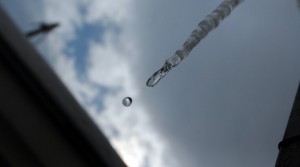Liquid water comes in two forms — low density and high density, scientists have found.
The findings add to the anomalous properties of this ubiquitous, life-giving liquid, which is like no other on Earth.
“The new remarkable property is that we find that water can exist as two different liquids at low temperatures where ice crystallization is slow,” Anders Nilsson, a chemical physicist at Stockholm University in Sweden, Water is essential for life (at least on Earth). And wherever liquid water exists — whether it’s in icebound lakes or scalding hydrothermal vents — tiny microbes have been found. That is why scientists have been excited by the possibility of salty water flows and other evidence of ancient water on Mars — it means there may well have been life early on in the Red Planet’s history.
“It is very exciting to be able to use X-rays to determine the relative positions between the molecules at different times”, says Fivos Perakis, postdoc at Stockholm University with a background in ultrafast optical spectroscopy. “We have in particular been able to follow the transformation of the sample at low temperatures between the two phases and demonstrated that there is diffusion as is typical for liquids”.
It turns out that water has strange physical properties found in no other liquids known to scientists. For one, it can exist in all three phases at Earth-like temperatures and pressures. For another, its molecular configuration — two hydrogens mated to an oxygen molecule — creates strong polarity, or a highly positively charged region and a highly negatively charged region. That, in turn, allows almost any substance to be dissolved in it; in that way, substances such as calcium ions can travel (dissolved) within water into and out of a cell, for instance, Brian Glazer, an oceanographer at the University of Hawaii at Manoa, who has studied astrobiology, previously told Live Science. Already, scientists have identified 70 properties of liquid water that differ from other liquid substances. Scientists wondered whether a similar transition may occur in liquid water. To find out, Nilsson and his colleagues used X-rays to track the distance between individual molecules of H20 at low temperatures. Using this technique, they watched as the water transitioned from an amorphous, glassy, frozen liquid state (essentially, uncrystallized ice), to a viscous liquid, and then almost immediately to another, more viscous liquid with a lower density, the researchers reported today (June 26) in the journal Proceedings of the National Academy of Sciences.
The findings shed new light on the bizarre behavior of liquid water.
“The new results give very strong support to a picture where water at room temperature can’t decide in which of the two forms it should be, high or low density, which results in local fluctuations between the two,” study co-author Lars G.M. Pettersson, a theoretical chemical physicist at Stockholm University, said in the statement. “In a nutshell: Water is not a complicated liquid, but two simple liquids with a complicated relationship.”
source: livescience.com
Ask me anything
Explore related questions





